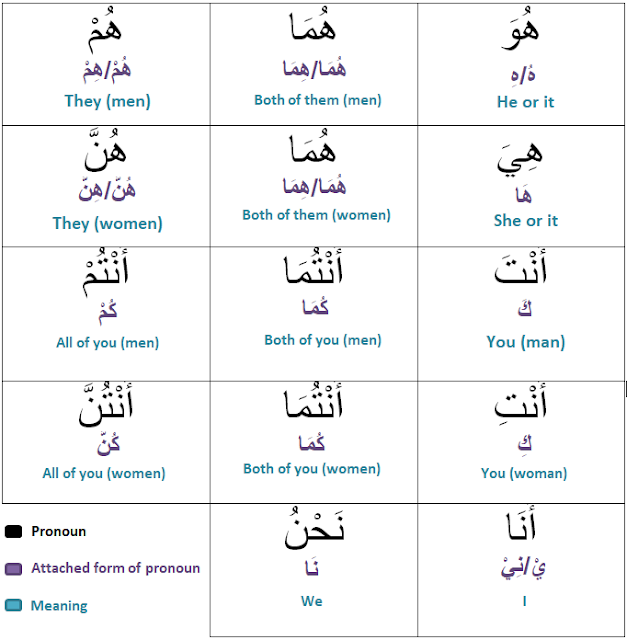Status detailed: Lesson 1
Status detailed (Forms, how to tell
status, light vs heavy status, flexibility)
In the
previous lessons, we had learned about the 4 properties of isms. They are
status, number, gender and type. From today, we will be looking at each of
those properties in detail In Sha Allah. And today we are starting with the
first property “status.”
There are
basically 4 things we need to understand about status. Those are the forms of
status, how to tell status, light and heavy status and flexibility. As
complicated as these sound we already have gone through some of these things
and there are quite simple as you will see In Sha Allah. So let’s get right
into it. Bismillah!
1. Forms of
status
We already
know that there are 3 forms of status. They are:
a) Rafa’ – doer
b) Nasb – detail
c) Jarr
2. How to tell
status
We also
learned how to identify which status a word is in. We can identify status in
two ways. They are:
A- By looking at
the ending sounds
ُ ٌ Rafa’
(‘u’ or ‘un’) sound
َ ً Nasb (‘a’ or ‘an’) sound
ِ ٍ Jarr (‘I’ or ‘in’) sound
If a word
ends with ‘u’ or ‘un’ sound that means it is in rafa’ form. If a word ends with
‘a’ or ‘an’ sound it is in nasb form and so on.
B- By looking at
ending combinations.
In the
muslim chart we saw that some words end with ending combinations like ‘AANI’,
‘AYNI’ and so on. Take a look.

As you can
see the first column has ending sounds as we saw above. The other two columns
have ending combinations. And there are two combinations we need to remember
from each column. The table below summarizes how to identify the status using
ending combinations
|
|
Pair combinations
|
Masculine plural combinations
|
Feminine plural combinations
|
|
Rafa’
|
AANI
|
OONA
|
AATHUN
|
|
Nasb/Jarr
|
AYNI
|
EENA
|
AATHIN
|
3. Light vs
heavy status
All Arabic words by default are considered ‘heavy’. There are
2 kinds of heavy.
1. Heavy because of
thanween (‘un’, ‘an’ or ‘in’ sound)
2. Heavy because of
combination
Making a
word light usually involves removing the ن
sound. Some examples are given below.
مُسْلِمٌ (muslimun) – heavy
مُسْلِمُ (muslimu) – light
مُسْلِمَانِ (muslimaani) – heavy
مُسْلِمَا (muslimaa) – light
مُسْلِمَيْنِ
(muslimaini) – heavy مُسْلِمَيْ
(muslimai) – light
There are 4 reasons why a word can be made light. We will be
looking at the 4 reasons in the upcoming lessons In Sha Allah.
*When there is ‘Al’ at the beginning of the word, we can’t
put a tag of light or heavy on that word.
Having these in mind, complete the following exercise.
Exercise 1:
Identify whether the words given below are heavy or light.
نَفْسٍ
نَفْسِ
فِئَتَيْنِ
فِئَتَي
الْمُنَافِقُون
فَوقَ
كاَفِرَةٌ
كَافِرَةُ


Comments
Post a Comment